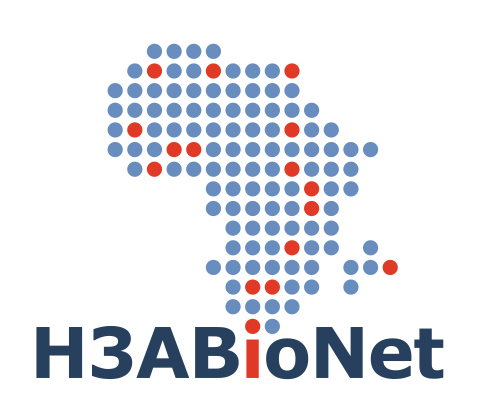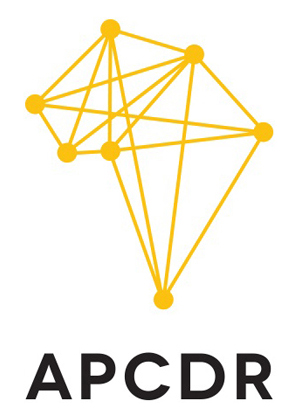ISCB Africa ASBCB Conference on Bioinformatics 2017
SESSION 3: Bioinformatics of human genetics and population studies
Oral Presentation Abstracts
A bioinformatics protocol for analyzing cancer patient survival based on transcriptome datasets
Presenter:
Gaston Mazandu
African Institute for Mathematical Sciences
Additional authors:
Samuel Mensah
African Institute for Mathematical Sciences
Mathematical Sciences
Andrews Frimpong
African Institute for Mathematical Sciences
Mathematical Sciences
Chinenye Nworah
African Institute for Mathematical Sciences
Mathematical Sciences
Alexis Nshimiyimna
African Institute for Mathematical Sciences
Mathematical Sciences
Simukai Utete
African Institute for Mathematical Sciences
Mathematical Sciences
Emile Chimusa
University of Cape Town
Pathology
Nicola Mulder
University of Cape Town
Integrative Biomedical Sciences
According to the World Health Organization (WHO), cancer is currently a leading cause of death worldwide, with an estimate of 8.8 million cancer-related deaths in 2015. Cancer stem cells are regulated by complex interactions with the components of the tumor micro-environment through networks of cytokines and growth factors. These interactions are mediated by a group of proteins and microRNAs (miRs), which are expressed or repressed. These expression levels are critical for cancer stem cell formation and expansion, enabling the promotion of tumor cell proliferation and migration, as well as for the survival of cancer recurrence and patient survival. Microarray and RNA-seq provide tools to generate genome wide transcriptome information, deciphering global gene expression patterns and quantifying a large dynamic range of expression levels. In this study, we use datasets from The Cancer Genome Atlas (TCGA) to develop an expression level-based model to: (1) Predict the breast cancer patient survival, and (2) Identify genes specific to cancer patients and critical to their survival. This new pipeline has identified SIN3A, CSNK2A1, FBXO22, SLC44A4, LPCAT3, ITGAX and SLC22A23 as breast cancer associated genes of which SLC44A4 and ITGAX were previously reported to be related to cancer. Furthermore, we noticed that patients who expressed high levels of SLC44A4 and low levels of ITGAX were likely to survive longer compared to patients with low levels of SLC44A4 and higher levels of ITGAX. This may contribute to the detection of cancer case and the development of effective therapeutic strategies.
A multi-scenario genome-wide medical population genetics simulation framework (FractalSIM)
Presenter:
Jacquiline Mugo
University of Cape Town
Additional authors:
Ephifania Geza
Computational Biology Division, Institute of Infectious Disease and Molecular Medicine, University of Cape Town and African Institute for Mathematical Sciences, Muizenberg, Cape Town Department of Integrative Biomedical Sciences
Gaston Mazandu
Computational Biology Division, Institute of Infectious Disease and Molecular Medicine, University of Cape Town and African Institute for Mathematical Sciences, Muizenberg, Cape Town
Department of Integrative Biomedical Sciences
Joel Defo
Computational Biology Division, Institute of Infectious Disease and Molecular Medicine, University of Cape Town
Department of Integrative Biomedical Sciences
Samar Elsheikh
Computational Biology Division, Institute of Infectious Disease and Molecular Medicine, University of Cape Town
Department of Integrative Biomedical Sciences
Nicola Mulder
Computational Biology Division, Institute of Infectious Disease and Molecular Medicine, University of Cape Town
Department of Integrative Biomedical Sciences
Emile Chimusa
Division of Human Genetics, Faculty of Health Sciences, Institute of Infectious Disease and Molecular Medicine, University of Cape Town, Observatory, Cape Town
Department of Pathology za:
Recent technological advances in high-throughput sequencing and genotyping have facilitated an improved understanding of genomic structure and disease-associated genetic factors. In this context, simulation models can play a critical role in revealing various evolutionary and demographic effects on genomic variation, enabling researchers to assess existing and design novel analytical approaches. Although various simulation frameworks have been suggested, they do not account for natural selection and genomic variation affecting diseases in admixture processes using resampling approaches (known to be fast and effective in mimicking real datasets), they are tailored to a single chromosome or a genomic region, very few capture large-scale genomic data, and are not accessible for genomic communities. We have developed a multi-scenario genome-wide medical population genetics simulation framework that has the capability to accurately mimic and generate genome-wide data under various genetic models on genetic diversity, genomic variation affecting diseases and DNA sequence patterns of admixed and/or homogeneous populations. Moreover, the framework accounts for natural selection in both homogeneous and admixture processes. We have assessed the output using popular tools, and the results demonstrated its capability to accurately mimic real scenarios and can be used to evaluate the performance of a range of genomic tools from ancestry inference to genome-wide association studies. This research work was published in June 2017.
A genome-wide association study of cardiometabolic traits in a sub-Saharan Africa population
Presenter:
Segun Fatumo
Wellcome Trust Sanger Institute
Cardiometabolic risk factors and its metabolic consequences of hypertension, type 2 diabetes, cardiovascular disease, and other co-morbidities continue to represents one of the biggest health challenges facing the world today and their prevalence is rising in Sub-Saharan Africa (SSA). Genome-wide association studies (GWAS) have identified novel genetic loci associated with a wide range of cardiometabolic traits, however a paucity of them has to date focused on SSA. We present the results of a GWAS comprising 34 traits and low coverage whole genome sequence (WGS) and dense array data from 1622 and 4778 individuals, respectively, from the MRC/UVRI General Population Cohort (GPC) study in rural south-west Uganda. . We identify a novel locus associated with HbA1C levels in the HbA2 gene on chr16 (P=6.9e-19). This 3.8kb deletion is common among Africans (MAF=0.25) and rare among Europeans (MAF=0.005), and has been previously shown to be strongly associated with several haematological traits among African-Americans—consistent with our findings from the GPC. We also identify and replicate a novel association signal specific to African populations at the GPT locus with alanine transaminase. In addition, we identify a novel association with serum bilirubin on the X chromosome for variant rs146474788, which is unique to African populations. Our findings provide proof-of-concept that in addition to providing an invaluable resource to researchers worldwide, such large-scale efforts in Africa can identify novel susceptibility loci associated with complex disease traits.
Designing the H3Africa genotyping array
Presenter:
Ananyo Choudhury
University of Witwatersrand
Additional authors:
Gerrit Botha
University of Cape Town
Computational Biology Division
Department of Integrative Biomedical Sciences
Emilson Chimusa
University of Cape Town
Division of Human Genetics
Scott Hazelhurst
University of Witwatersrand
School of Electrical & Information Engineering
Mamana Mbiyavanga
University of Capetown
Computational Biology Division
Department of Integrative Biomedical Sciences
Ayton Meintjes
University of Capetown
Computational Biology Division
Department of Integrative Biomedical Sciences
Adebowale Adeyemo
National Institutes of Health USA
National Human Genome Research Institute
Zané Lombard
National Health Laboratory Service & University of the Witwatersrand-Division of Human Genetics
Nicola Mulder
Computational Biology Division, IDM
University of Cape Town
Dept Integrative Biomedical Sciences
Despite a significant decrease in the cost of whole genome sequencing (WGS) in the recent years, single nucleotide variant (SNV) genotyping arrays remain the stalwart of genetic association studies. This is because of cost-effectiveness as well as the ease of data storage and analysis. The arrays currently used for population-genetic and genome-wide association studies in African populations, however, predominantly represent common Eurasian genetic variation and have limited power in capturing the enormous genetic diversity in Africans. Moreover, intrinsic differences in LD architecture between African and non-African populations restrict their ability to identify association signals in Africans.
To overcome these challenges the Human Heredity and Health in Africa (H3Africa) Consortium designed a 2.5 Million SNV-array as an Africa-centric, unbiased, cost-efficient solution for genomic research on the continent. An unprecedented dataset of over 2500 unpublished African whole genomes and novel computational approaches were used to design an array with a considerably better representation of African genetic diversity. Consequently, the H3Africa array has a dense coverage of African LD blocks and includes thousands of novel African variants. The array contains a comprehensive set of SNVs of potential clinical and pharmacogenomics significance based on databases (GWAS-Catalog, ClinVar, Cosmic and PharmGKB) and suggestions from local researchers.
Computational analyses show the H3Africa array to significantly outperform currently available arrays of similar size in terms of both genomic coverage and imputation accuracy. The array will provide researchers a resource to discover novel disease associations and also to narrow down on the causal variants in an African setting.
A Uganda innovation hub for deep analytics, disease surveillance, discovery science and translation
Presenter:
Beatrice Dhaala
MRC-Uganda
A Uganda innovation hub for deep analytics, disease surveillance, discovery science and translation (NULL) In recent years, health data has seen a dramatic increase in volume as well as complexity and diversity; mining this vast pool of complex health data has the potential among others to provide better insights into disease outbreak patterns, inform therapy target discovery and support health policy by improving our understanding of health and disease at a population level. The generation of data resources within the continent has created the need for initiatives supporting the expansion of expertise on health data management and analytics to ensure that Africa can fully benefit from health data. <br>The MRC/UVRI Uganda Medical Informatics centre (UMIC) was created as an initiative to achieve the broader development goals by harnessing the data and analytics revolution in Africa; in this context, the MRC/UVRI UMIC was set forth to capitalise on the potential benefits of large-scale health data by combining expertise on genomics, analytics, High Performance Compute (HPC) and DevOps with the routine use of high-end HPC resources capable of handling the current complexity and size of health care data in Africa. <br>Under this framework the UMIC supports major Pan-African and local research initiatives in medical genomics and bioinformatics such as The Genome Diversity in Africa Project (GDAP), TrypanoGEN (TPG), The PANGEA-HIV Consortium, The International AIDS Vaccine Initiative and The MRC/UVRI Uganda Research Unit on AIDS (MRC/UVRI). <br>As Global Health paradigms begin to shift, moving the focus from treatment to prevention, the UMIC intends to provide the tools to impact both foreign as well as domestic policy development.


